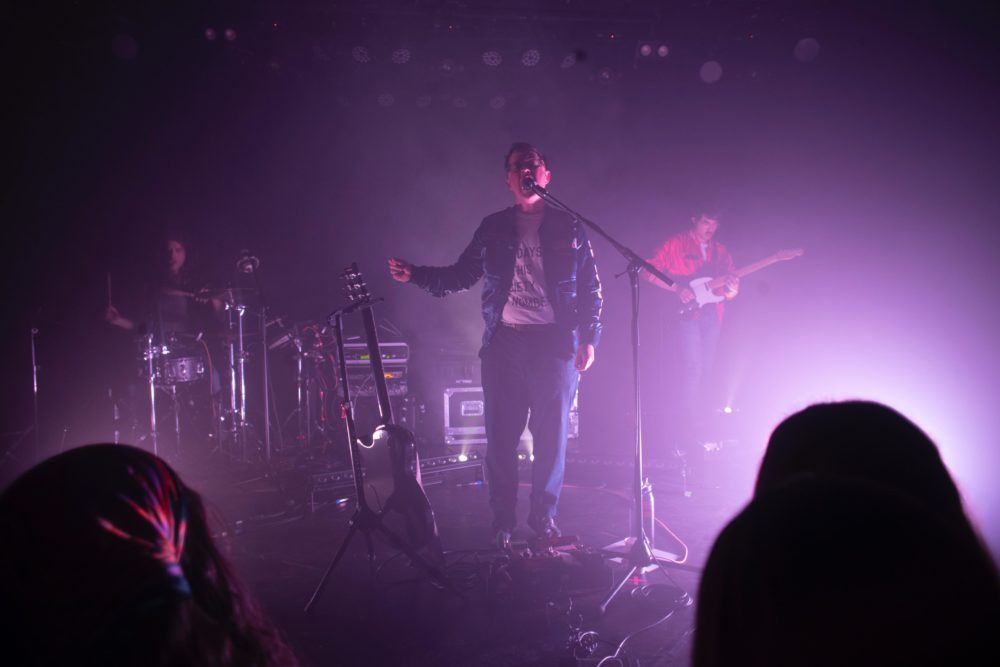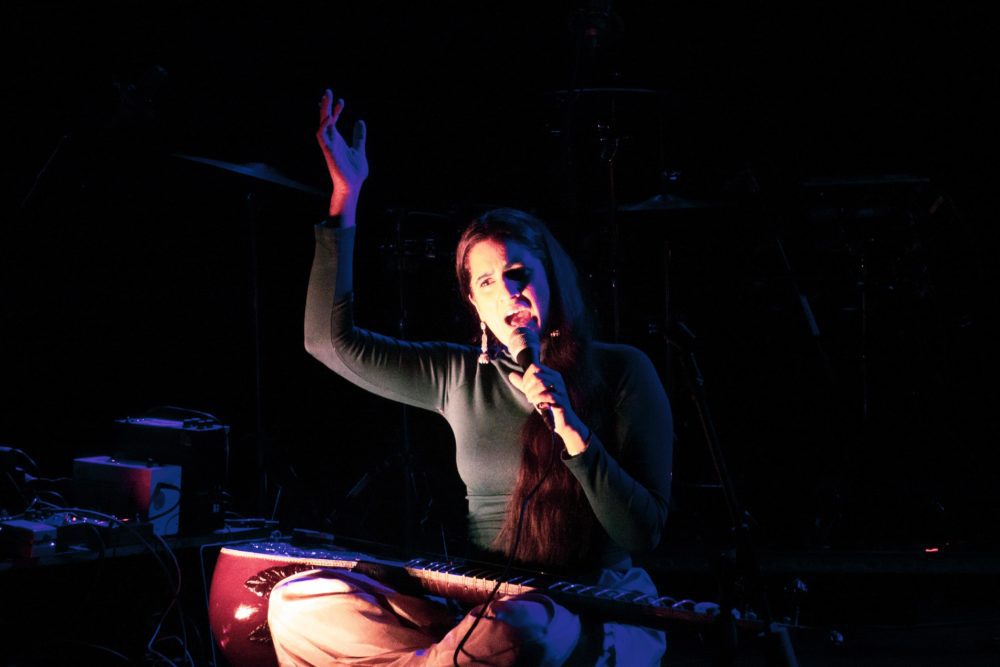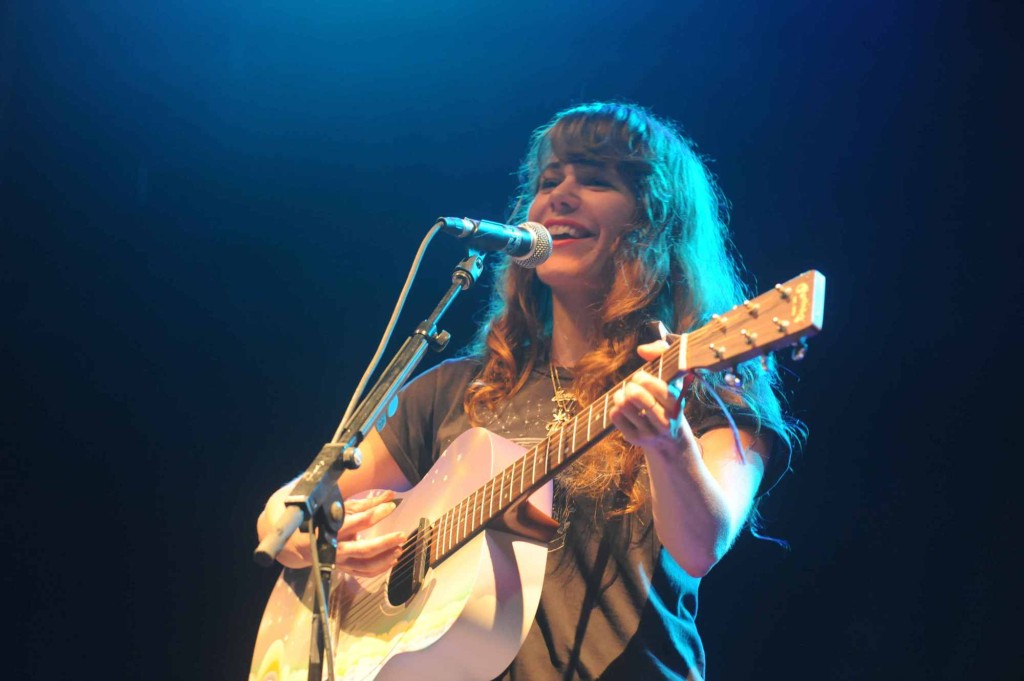LIVE REVIEW: Lower Dens with Ami Dang @ The Roxy

Indie pop band Lower Dens has built up a loyal following since its 2010 inception, with hits like 2015’s ’80s-inspired “To Die in L.A.” and 2016’s introspective “Real Thing” not just providing catchy music but also making people think. They released their fourth album The Competition in September and have since been touring with ambient sitar player and vocalist Ami Dang. On Thursday, February 27, they stopped by LA’s famous Roxy Theatre to perform for an intimate but enthusiastic crowd.
Dang prefaced each of her songs with an explanation of what inspired them, revealing deep meanings behind each. One song’s lyrics came from an old Muslim poem about “how we can not only respect and tolerate one another but find places where spiritually we align,” and another was based on One Thousand and One Nights, setting the stories to music with no lyrics to reclaim whitewashed translations. Behind Dang’s soaring, dream-like voice was a thunderous electronic sound that made my body vibrate. Her huge sitar and passionate, chant-like singing against a background of synths and electronic beats provided a sound that was both modern and spiritual.

The setting was as quirky as the performers themselves, with blue lights cast by a disco ball and confetti sprinkled across the ground. The light on the stage turned from red to purple to orange as Lower Dens performed.
The main act played some of the songs off its latest album, including “Lucky People,” a mellow but dark ballad reminiscent of The Cure, and “I Drive,” an honest and relatable ode to troubled family relationships. The show also featured music from 2015’s Escape from Evil, like the slow, pleading “Ondine,” as well as the haunting “Brains” all the way back from 2012’s Propagation.
Lower Dens have built up their following through their innovative music and artful, poetic lyrics as well as lead singer Jana Hunter‘s outspokenness on issues like gender identity and racism in the music industry. But not all of these appeals translate well into live performances. Hunter’s style of singing often involves swallowing his words, leaving the audience unable to glean their intricate meanings.
The heavy backtracks made it even more difficult to make out the melodies and lyrics, and the band’s performance style was understated, with little movement or displays of emotion, which made the show feel low-energy. While this shoe-gaze style has been done to make a statement in the past, the way the Lower Dens presented themselves felt more like an attempt to play it safe, an unwillingness to commit to any statement — a surprising contrast to Hunter’s boldness in his writing and interviews.
Nevertheless, the band played for an excited crowd of people, who cheered when hits like “To Die in LA” came on and swayed along to the music throughout the performance. As someone who was familiar with Lower Dens but had not followed them closely, I wished they hadn’t buried so much of their music’s profound meaning and emotion. But the show did inspire me to listen to and research their music online when I got home, and perhaps that was the best way to experience its full depth.




